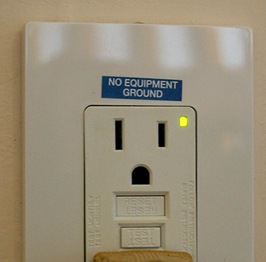K9mlxj
Member
Hi,
Is running ground wire in the crawl space from old 2-prong electrical outlet (clamped) to copper piping NEC code compliant? It's 100% copper piping in the house, and the copper piping goes underground 16 inches and runs for 60 ft before it gets to the water meter by the curbside.
I suppose that copper piping is considered a legitimate ground rod.
I wonder if I can clamp the ground wire anywhere along the copper piping . Or it has to be close to the entrance of the house to comply to NEC code?
Another way if this doesn't work, is to run ground wires from all the 2-prong outlets to a single bus bar, and then run a single ground wire from there to the main panel.
I have GFCIs in some of the bedrooms. Good to still keep them installed, or no need after grounding is available for those outlets?
Thanks.
Is running ground wire in the crawl space from old 2-prong electrical outlet (clamped) to copper piping NEC code compliant? It's 100% copper piping in the house, and the copper piping goes underground 16 inches and runs for 60 ft before it gets to the water meter by the curbside.
I suppose that copper piping is considered a legitimate ground rod.
I wonder if I can clamp the ground wire anywhere along the copper piping . Or it has to be close to the entrance of the house to comply to NEC code?
Another way if this doesn't work, is to run ground wires from all the 2-prong outlets to a single bus bar, and then run a single ground wire from there to the main panel.
I have GFCIs in some of the bedrooms. Good to still keep them installed, or no need after grounding is available for those outlets?
Thanks.
Last edited:

